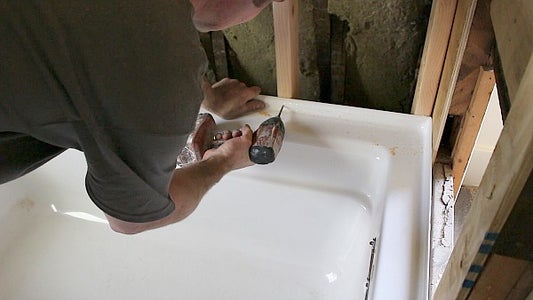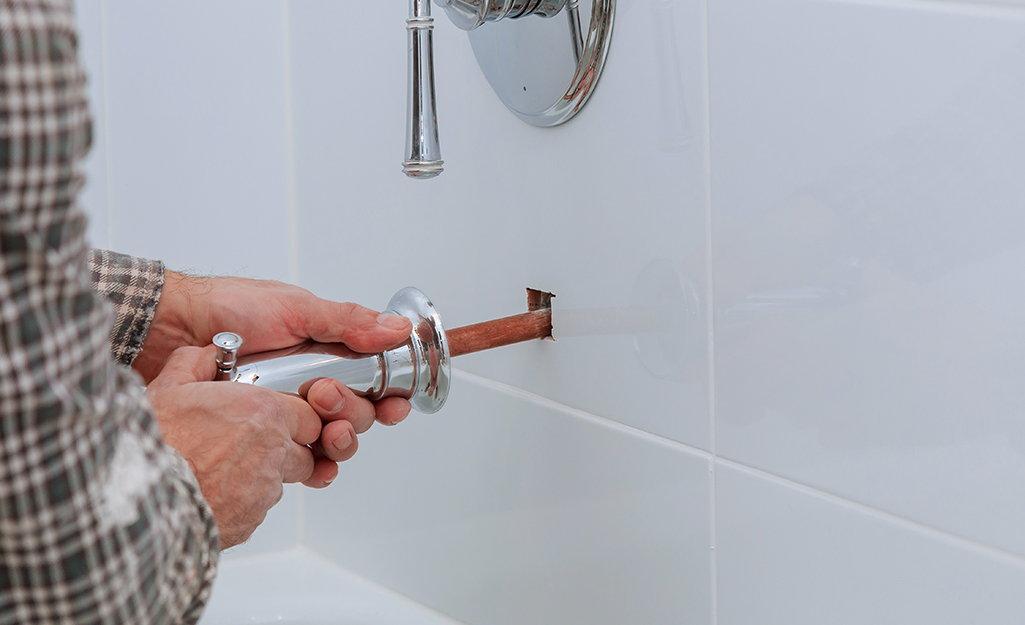Here below you can discover a bunch of professional material with regards to Tools You Need to Install a New Bathtub .

Setting up a bathtub isn't exactly brain surgery, but it does call for solid plumbing, woodworking, as well as sometimes, tiling abilities. Replacing an old tub with a new one is additionally a moderately hard project. If the old bathtub is readily accessible, the job can relocate rapidly; if you need to open a wall surface to remove the old bathtub and place the new tub, the task is much harder. In either instance, the job is within a residence handyman's skills, although you will certainly need an assistant to vacate the old tub and also set in the brand-new one. Make sure you have certified yourself for the task and are comfortable trying it. Rather than employing a contractor to take over a halfway-completed task, it is better to think about utilizing one before you begin. Opportunities are you may need a specialist plumber to make tube connections.
This short article will certainly help you set up a brand-new bath tub in your restroom if you have actually currently bought a new bathtub and also don't need to transform the setup of your previous supply of water pipelines.
Your devices and also material checklist must comprise the following:
Removing Old Taps
If you need to replace old faucets with brand-new ones as a part of your installment, then the first thing you should do is detach the water system. After doing so, activate the faucets to drain any type of water staying in the system. The procedure of eliminating the existing faucets can be fairly bothersome as a result of the restricted access that is typically the situation.
Utilize a container wrench (crowsfoot spanner) or a faucet device to reverse the nut that attaches the supply pipes to the taps. Have a cloth ready for the remaining water that will come from the pipes. When the supply pipes have been eliminated, utilize the exact same device to loosen up the nut that holds the faucets onto the bath/basin. You will need to quit the solitary faucets from transforming throughout this procedure. When the faucets have been eliminated, the holes in the bath/basin will have to be cleaned up of any type of old sealing compound.
Before moving on to fit the new taps, compare the pipeline links on the old faucets to the brand-new faucets. If the old taps are longer than the new taps, after that a shank adapter is needed for the new taps to fit.
Suitable New Touches
If the tails of the brand-new taps are plastic, then you will need a plastic adapter to stop damages to the string. One end of the port fits on the plastic tail of the tap and the other end gives a link to the existing supply pipes.
If you need to fit a monobloc, then you will certainly call for lowering couplers, which links the 10mm pipe of the monobloc to the basic 15mm supply pipeline.
Next, position the tap in the placing hole in the bath/basin ensuring that the washing machines remain in location between the faucet and also the sink. Protect the tap in position with the supplier supplied backnut. When the tap is firmly in place, the supply pipes can be attached to the tails of the faucets. The taps can either be connected by utilizing corrugated copper piping or with typical tap adapters. The former kind ought to be connected to the faucet ends initially, tightening only by hand. The supply pipelines can later be connected to the various other end. Tighten both ends with a spanner after both ends have been linked.
Installing the Bath tub
Utilizing the two wood boards under its feet, put the bathtub in the called for setting. The wood boards are practical in evenly spreading out the weight of the tub over the area of the boards rather than focusing all the weight onto four tiny points.
The next goal is to make sure that the bathtub is leveled all round. This can be attained by inspecting the level as well as adjusting the feet on the tub until the level reads degree.
To install faucets, fit the bottom of the outermost flexible tap adapter to the proper supply pipeline by making a compression join; after that do the exact same for the various other tap.
Activate the water and examine all joints and new pipework for leakages and tighten them if needed. Fill the tub as well as likewise examine the overflow outlet as well as the regular outlet for leakages.
Finally, take care of the bathroom paneling as described in the maker's instruction manual. Tiling as well as securing around the bathtub must wait up until the bath tub has been utilized at the very least once as this will resolve it into its last position.
Getting ready for the Installment
Firstly, the sustaining structure supplied with the bath must be fitted (if called for) according to the manufacturer's directions. Next off, fit the faucets or mixer to the bathtub. When fitting the faucet block, it is very important to see to it that if the tap features a plastic washer, it is fitted between the bathroom and the taps. On a plastic bath, it is additionally reasonable to fit a supporting plate under the taps unit to prevent stress on the tub.
Fit the versatile tap ports to the bottom of both faucets making use of 2 nuts and also olives (sometimes supplied with the tub). Fit the plug-hole outlet by smearing mastic filler round the sink electrical outlet opening, and afterwards pass the electrical outlet via the hole in the bathroom. Use the nut supplied by the producer to fit the plug-hole. Examine the plug-hole outlet for an inlet on the side for the overflow pipe.
Next, fit the end of the versatile overflow pipe to the overflow outlet. After that, screw the pipe to the overflow face which ought to be fitted inside the bathroom. Make certain you utilize every one of the provided washing machines.
Link the catch to the bottom of the waste electrical outlet on the tub by winding the string of the waste electrical outlet with silicone mastic or PTFE tape, as well as screw on the catch to the outlet. Link the bottom of the overflow tube in a similar manner.The bath ought to now be ready to be fitted in its final position.
Tiling Around the Bathtub
In the location where the bathroom fulfills the ceramic tile, it is needed to secure the joins with a silicone rubber caulking. This is essential as the fitting can move enough to crack an inflexible seal, creating the water to pass through the wall surface between the bath and the tiling, causing problems with wetness as well as possible leaks to the ceiling below.
You can pick from a selection of coloured sealers to assimilate your components as well as fittings. They are marketed in tubes and cartridges, and can securing spaces up to a size of 3mm (1/8 inch). If you have a bigger space to fill, you can fill it with spins of drenched newspaper or soft rope. Remember to constantly fill up the bathtub with water before securing, to enable the movement experienced when the bathtub remains in use. The sealer can split relatively very early if you do not take into consideration this movement prior to sealing.
Conversely, ceramic coving or quadrant ceramic tiles can be used to border the bathroom or shower tray. Plastic strips of coving, which are easy to use and reduce to size, are also conveniently offered on the market. It is suggested to fit the ceramic tiles using waterproof or water resistant glue as well as grout.
Bathtub Installation
How Important Is A Bathtub To Your Home?
High-quality baths, showers, and other bathroom updates are necessary when considering a smart investment in your home. It’s a room that you go to every day and one that is constantly being used by guests.The bathroom is one of the top trafficked rooms in a home and also one of the most valuable in terms of home resale.
Install Piping Before Tub
You will be using your existing drain and waste vent system, but pipes required include the hot and cold water supply lines and a pipe leading to a shower head. A mixing valve and shower head are also needed. Air chambers may be required.
Position the Tub
Lower the tub into place so that the continuous flange fits against the wall studs and rests on 1’x4' or 2’x4' supports. Anchor the tub to the enclosure with nails or screws inserted through the flanges into the studs.
NOTE: Remember, bathtubs and shower stalls may require support framing. A bathtub filled with water is extremely heavy, so check building codes and framing support before installing the tub.
Assemble Drain Connections
Assemble the bathtub drain connections by connecting the tub overflow with the tub drain above the trap, not beyond it. The trap will have a compression fitting that screws over the arm of the overflow assembly.
Place a Pipe For the Shower Head
First, locate a brass female threaded winged fitting and attach it to a framing support via a screw or a nail. Then run a pipe up the wall for the shower head. Sweat or solder the other side of the brass fitting to the top of the pipe.
Attaching Hot and Cold Water Lines
Attach your water lines for both hot and cold by sweating these directly into the hot and cold ports of the mixing valve. The mixing valve will be how water enters the tub’s system, not by the pipes themselves.
Install the Spout
Extend a piece of 1/2 inch pipe, or whichever length is specified in the manufacturer’s instructions, for the tub spout. Sweat on a male threaded fitting at the end of the pipe or use a brass nipple of the proper length and a 1/2 inch cap.
NOTE: At this point you should have your rough-in plumbing work inspected before proceeding further.
Check For Leaks
Restore the water pressure and check the drain connection and the supply pipes for any sign of leaking.
estore the Bathroom Wall
Replace the wall with moisture-resistant drywall as a base for your wall covering. Seal the joints between the wall and your new tub with silicone caulk as protection against water seepage.
https://www.berkeys.com/2016/12/02/bathtub-installation-dallas/

I recently found that blog posting about How to Install a Bathtub Yourself while doing a search on the search engines. Liked our review? Please share it. Let another person check it out. Thank you for going through it.
Find Out More